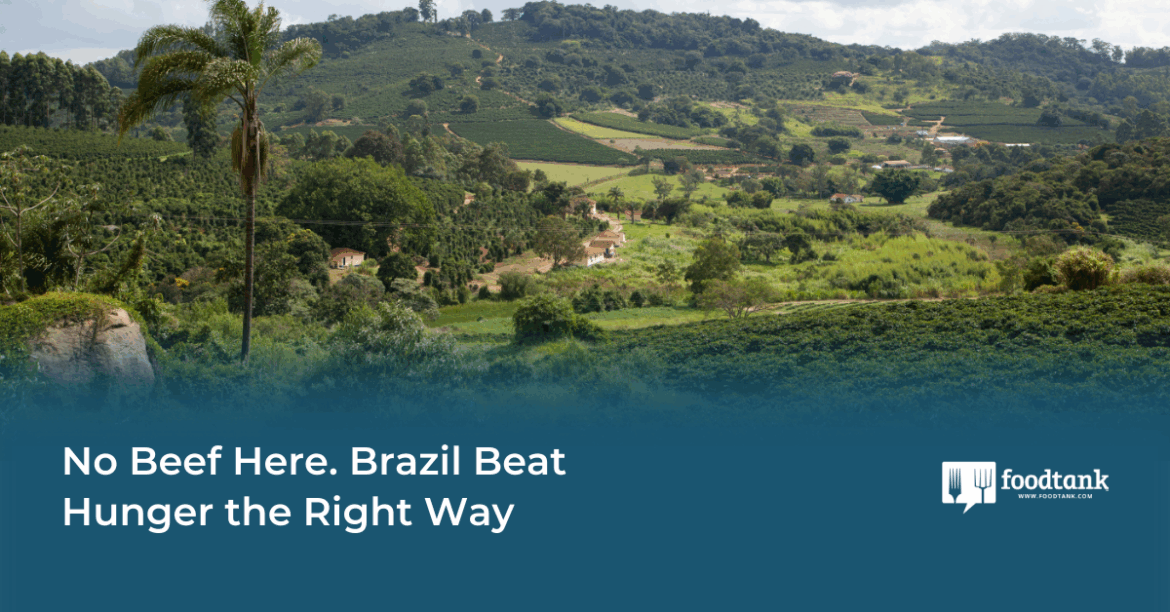Three years ago, 33 million Brazilians went to bed hungry. Today, Brazil is off the United Nations Hunger Map, an achievement marked not by markets or multinationals, but a return to policies that put people and farmers first. With food security at the top of the geopolitical agenda and as the country prepares to host world leaders at the U.N. Climate Change Conference (COP30) this turnaround puts Brazil’s policies at the forefront of global debates.
Brazil’s food system is one of contradictions. As the world’s largest exporter of beef and soybeans, it remains under the thumb of agribusiness. Globally, agriculture is responsible for a third of human-sourced global emissions, and in Brazil, those interests are driving the destruction of the Amazon, fueling a climate crisis that’s destabilizing trade and food supplies world over. Yet Brazil has also returned to being a state that feeds its people with climate-smart, social policies, creating a national food system few have been able to achieve.
To understand how Brazil got here, it’s worth recalling how far it went in the other direction under the previous administration—the World Bank called it “economic havoc.” The Bolsonaro government underfunded public nutrition programs and rural financing for sustainable agriculture. COVID-19 made hunger worse. By 2022, over half the country faced food insecurity, the worst figures since measurements began.
Returning to office in 2023, President Lula da Silva made hunger eradication his top priority. He drew from a well-established playbook, one his previous administration had written. During his terms in the 2000s, Brazil had already lifted millions out of poverty through policies like Fome Zero, Bolsa Família, Pronaf, and institutional food purchasing programs. The combination of these policies led Brazil out of the U.N. Hunger Map in 2014, becoming a global benchmark for social protection and food sovereignty.
Lula’s new administration moved quickly to expand direct cash transfers through Bolsa Família. But it also looked beyond temporary relief. Within months, the government reactivated structural policies like the national food council (CONSEA), relaunched the Programa de Aquisição de Alimentos (PAA) to purchase produce from smallholder farmers, and mandated that at least 30 percent of school meal procurement come from family farms. None of these ideas were new; they had already proven their effectiveness before being systematically dismantled.
In a perfectly democratic world, such policies would have been well established. This agenda was one demanded by Brazil’s small farmers, who constitute 77 percent of all Brazilian farmers and produce over two-thirds of the food consumed domestically. Yet they control just a quarter of the country’s farmland and receive less than a fifth of public credit. Today, just 1 percent of Brazilian farms control nearly half the land. In 2023–2024, agribusiness received more than four times the public financing granted to smallholders, despite being the sector most responsible for land concentration, emissions, and export-driven deforestation.
While agribusiness drives 80 percent of Amazon forest loss and pushes industrial monocultures vulnerable to pests and climate shocks, family farmers practice regenerative techniques that rebuild soil, sequester carbon, and preserve biodiversity. A recent, tragic natural experiment proved the point. Amid extreme weather in southern Brazil, agroecological farms have endured far better than soy plantations. More than solely food production, this approach is about building resilience and risk management in a heating world.
The solutions to hunger accompany climate mitigation, rural development, and equality: yet are routinely sidelined by policymakers in favor of businesses like JBS, the Brazilian meatpacker whose U.S. subsidiary made the single largest donation to Donald Trump’s inauguration—US$5 million. JBS were recently listed on the New York stock exchange, despite admitting to bribing 1,800 officials in a previous Brazilian scandal.
An effect of this political influence is the persistence of an outdated idea: that food security requires intensification, scale, and global value chains. The data shows the opposite. The export agricultural model is undermining nutrition, equity, and ecological stability – with the unbridled expansion of those value chains, the number of people suffering food insecurity remains doggedly above 2 billion. While commodity exports hit record highs in 2023, more than 20 million Brazilians remained food insecure. Brazilians were never hungry because of a national lack of food, but a failure of power and policy.
Brazil’s experience proves that ending hunger isn’t a technological challenge, but a political one. It requires redistribution, democratic planning, and sustained public investment, not just GDP growth or fertilizer subsidies. The country has demonstrated what works. Now, globally we must decide what approach to champion.
Addressing food systems is a key pillar of the Action Agenda at COP30. Brazil’s policies inspired similar programs elsewhere in Latin America and Africa, and as part of a comprehensive sustainability program could set a bold, new precedent by moving away from extractive models that drive emissions and exhaust our critical global ecosystems.
Brazil is undeniably a powerhouse in the global food system but its real legacy could be in exporting its policy approach to family farming and zero hunger, not fueling destructive industrial agriculture. It has a choice to make, one that will reverberate across the global food system; will Brazil prioritize putting family farmers at its heart, or continue allowing meat moguls to eat it alive?
Articles like the one you just read are made possible through the generosity of Food Tank members. Can we please count on you to be part of our growing movement? Become a member today by clicking here.
Photo courtesy of Projeto Cafe Gato Mourisco, Unsplash


Comments are closed.